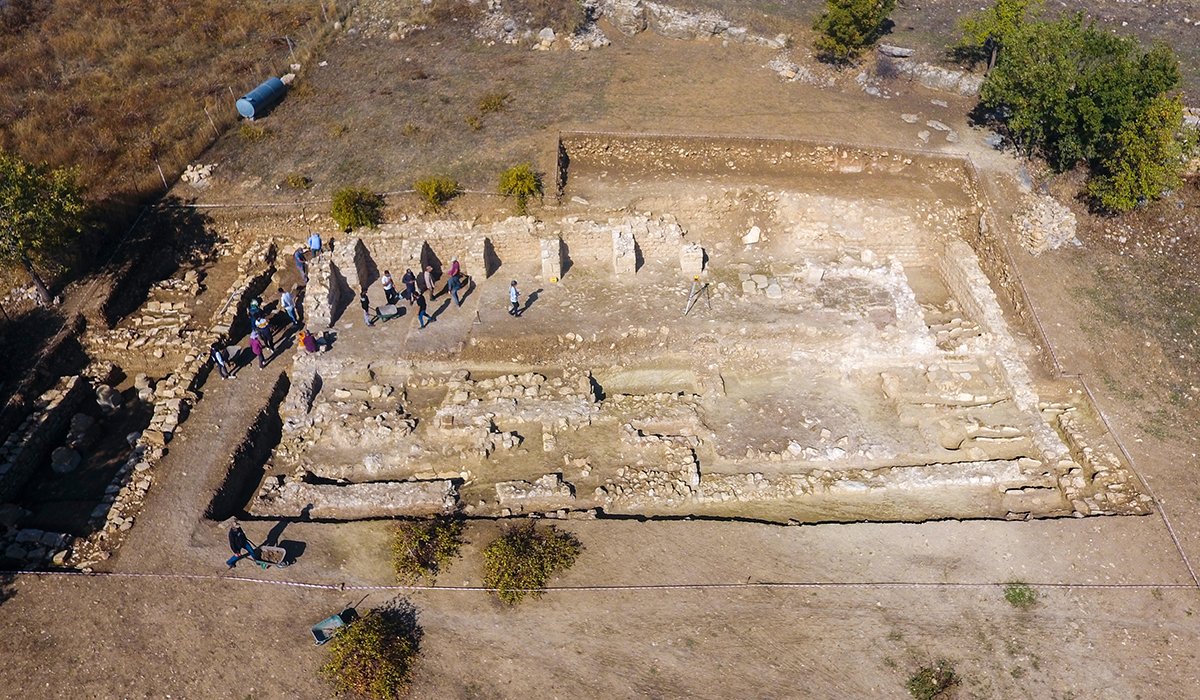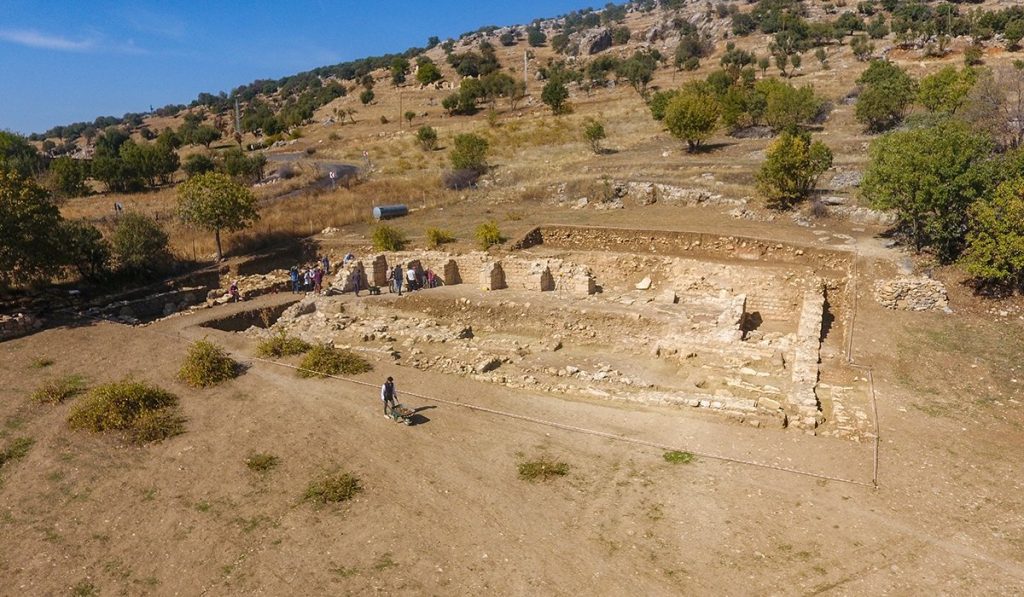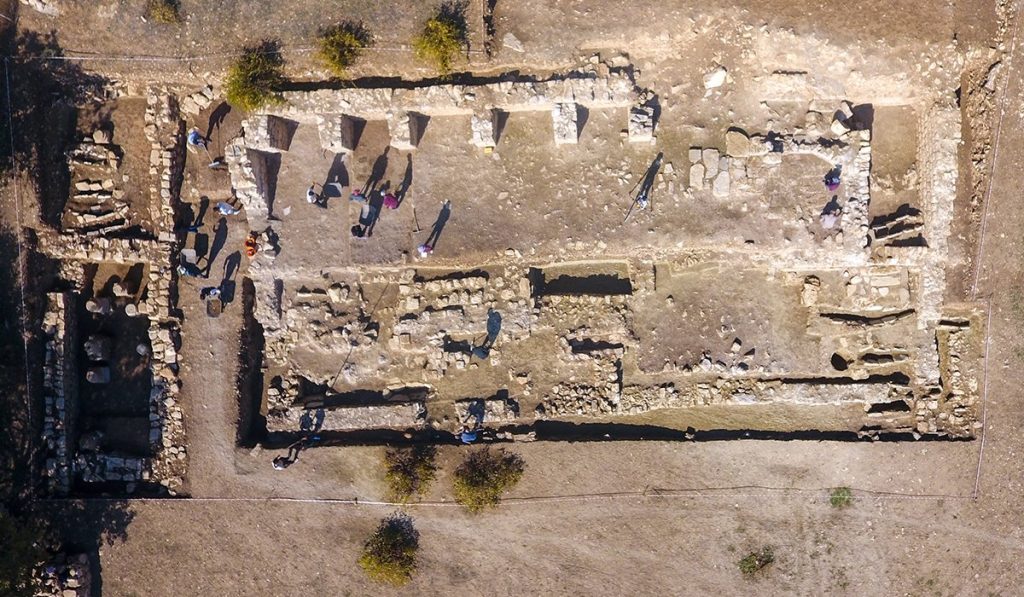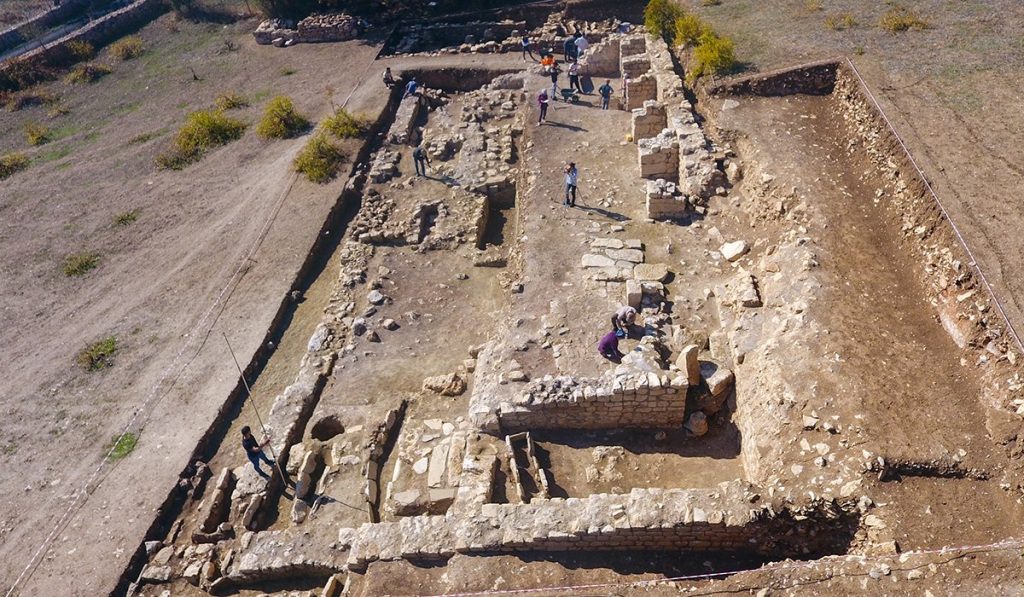
One of the oldest known Byzantine churches was found in Diyarbakır
The excavation uncovered one of the oldest Byzantine churches found in Diyarbakır. The church, estimated to be 1500 years old, contains 46 tombs.
The team conducting surface surveys in Diyarbakır’s Kulp district found a coin dating back to the reign of the Byzantine Emperor Anastasius I. Following this discovery, an excavation was initiated in the area by the Diyarbakır Museum Directorate in 2021.
During the excavations, where various artifacts such as coins, oil lamps, columns and pedestals were unearthed, the ruins of a building were unearthed this season. Experts determined that the building, whose outer walls were exposed, was a church.

Diyarbakır Museum Acting Director Müjdat Gizligöl expressed that during their ongoing excavations, they discovered a structure that they had not previously identified as remnants of a church. Gizligöl stated, “This year, it became clear during the excavation work that this is a Byzantine church. Our work here accelerated. The church was likely used in the 5th, 6th, and 7th centuries, then suffered damage, and was used as a cemetery until the 13th century. Within the church, 46 tombs were found, belonging to a wide array of individuals, including adults, children, women, and men. These tombs are scattered throughout the entirety of the church.”

“Gizligöl mentioned that they have found 13 inventoried and 39 studied artifacts during the excavations, which have been transferred to the museum. He stated, ‘Coins, spindles (a half-spherical object found under the needle used for spinning thread), lamps, columns and their bases, tomb findings… It’s possible to come across every kind of historical cultural asset reflecting its era. The artifacts we’ve discovered, through the analysis conducted on them, are valuable in providing information about the culture and way of life of that period.”
The field supervisor archaeologist, Kemal Atak, informed the AA correspondent that they commenced the excavation based on the coin they discovered in the area, dated back to the reign of Byzantine Emperor Anastasius I, between 491-518 AD.
Atak expressed that the establishment of the church dates back to the 5th-6th centuries, stating:
“The remains of the church closely resemble examples found in Syria. The church initially had a single nave, later expanded through additions. Currently, we have identified the surrounding walls of the church. The church has a rectangular plan, measuring 25 meters in length and 15 meters in width.

Within the church, there are metal crosses and cross motifs drawn on architectural blocks. Its architecture presents a basilica plan to us, with a rectangular structure containing an apse (a standard two-dimensional representation’s vertical axis).
When examining the findings and architectural plan, this church represents one of the earliest examples. This corresponds to 1500 years ago from today.”
Atak mentioned that the apse part of the church is very narrow, suggesting they believe the structure was initially a small shrine built as a chapel, and later, with the increasing population, additions were made to transform it into a larger church.
Cover Photo: AA
You may also like
- A 1700-year-old statue of Pan unearthed during the excavations at Polyeuktos in İstanbul
- The granary was found in the ancient city of Sebaste, founded by the first Roman emperor Augustus
- Donalar Kale Kapı Rock Tomb or Donalar Rock Tomb
- Theater emerges as works continue in ancient city of Perinthos
- Urartian King Argishti’s bronze shield revealed the name of an unknown country
- The religious center of Lycia, the ancient city of Letoon
- Who were the Luwians?
- A new study brings a fresh perspective on the Anatolian origin of the Indo-European languages
- Perhaps the oldest thermal treatment center in the world, which has been in continuous use for 2000 years -Basilica Therma Roman Bath or King’s Daughter-
- The largest synagogue of the ancient world, located in the ancient city of Sardis, is being restored











Leave a Reply